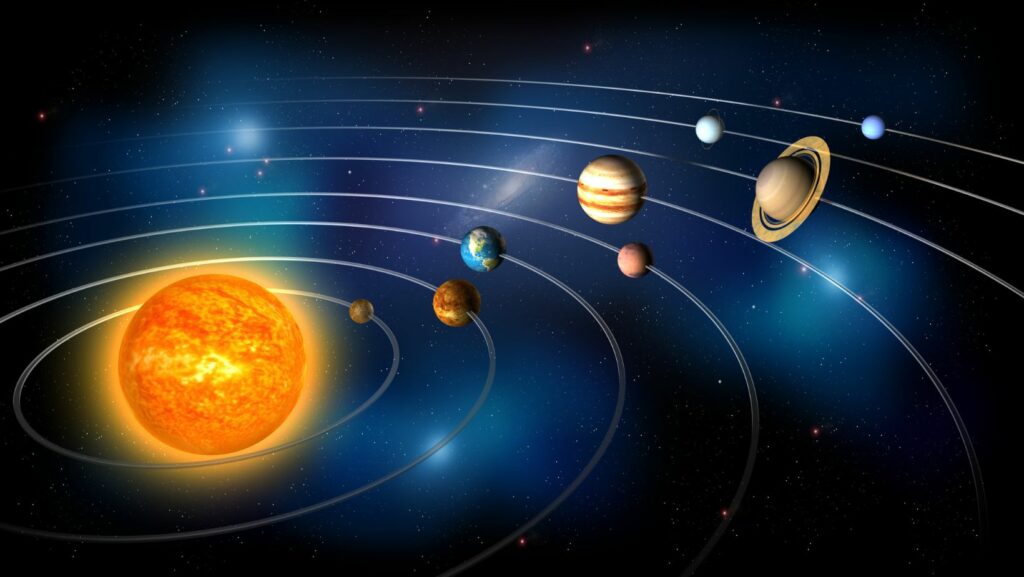Astronomers have long suspected the existence of mysterious worlds lurking beyond the orbit of Pluto. Recent studies now suggest not just one, but two planets larger than Earth are circling the Sun in this distant region. These findings could revolutionize our understanding of the solar system’s outer reaches.
The Study Findings
Researchers have identified two planets larger than Earth, orbiting the Sun beyond Pluto. This groundbreaking discovery unveils new dimensions of our solar system.
Key Discoveries About the Two Planets
- Planet Sizes: The two planets are estimated to be 2-4 times Earth’s diameter.
- Orbits: Both planets have highly elliptical orbits, taking them far beyond the Kuiper Belt.
- Masses: These planets have masses significantly exceeding Earth’s, possibly comparable to Neptune’s.
- Solar System Dynamics: The existence of these planets suggests a more dynamic solar system with additional gravitational influences.
- Formation Theories: These findings challenge current theories regarding the solar system’s formation and evolution.
- Research Opportunities: Future missions could focus on these outer regions, potentially revealing more about planetary formation and migration patterns.
Methodology Used in the Study
Researchers employed a combination of sophisticated tools and data analysis techniques to uncover these distant planets. The methodology focused on enhancing detection accuracy and validating findings.
Tools and Technologies Employed

Astronomers utilized powerful telescopes, such as the Subaru Telescope and Atacama Large Millimeter/submillimeter Array (ALMA), located in Hawaii and Chile. These instruments enabled scientists to observe faint objects in the outer solar system. They also leveraged advanced sensors including CCD cameras with high sensitivity to detect distant celestial objects with precision. Additionally, the study incorporated the use of supercomputers to model planetary orbits and simulate potential positions of these planets.
Data Analysis Techniques
The study applied statistical methods like Bayesian inference and Monte Carlo simulations to interpret the telescope data. These techniques assessed the probability of observed phenomena resulting from planetary presence rather than random noise. Researchers cross-referenced observational data with existing solar system models to identify anomalies suggesting planetary bodies. They also utilized automated software algorithms for processing large datasets, enhancing the speed and accuracy of detecting potential planetary signatures.
Significance of the Findings
The discovery of two planets larger than Earth beyond Pluto has several significant implications for astrophysics. These planets, which are estimated to be 2-4 times Earth’s diameter, provide new insights into the structure and dynamics of our solar system. Their presence suggests that our solar system is more complex than previously thought.
Impact on Solar System Models

Current solar system models may need revision. The presence of these large planets challenges the widely accepted theories of solar system formation and evolution. Scientists might need to develop new models to accurately represent the gravitational influences and migration patterns of these distant bodies.
Advancements in Detection Technology
The findings underline the importance of advanced technology in space exploration. Instruments like the Subaru Telescope and ALMA have proven crucial in detecting these distant planetary bodies. These tools, along with supercomputers for modeling and statistical methods like Bayesian inference, have elevated the accuracy of such detections.
Future Research Opportunities
New research avenues open up due to this discovery. Scientists can now explore how these planets formed and migrated to their current positions. This could lead to a better understanding of planetary formation and the dynamics of other solar systems.
Implications for Exoplanet Studies
Discovering these planets also impacts the study of exoplanets. The methodologies used to detect them can be applied to searching for exoplanets in other star systems. This may lead to identifying Earth-like planets in habitable zones, expanding our knowledge of potential life-supporting planets.
Historical Perspectives on Solar System Boundaries

The discovery of two planets larger than Earth beyond Pluto reshapes our understanding of the solar system’s boundaries. Historically, Pluto marked the edge of our solar system, but these new findings suggest a more complex and expansive outer region. This revelation challenges long-held beliefs and necessitates a reevaluation of solar system formation theories.
Advanced technology has played a pivotal role in these discoveries, highlighting the importance of continued investment in space exploration tools. As scientists refine their models and explore these distant planets further, the potential for new discoveries grows.


